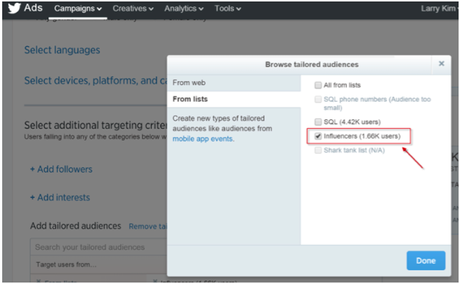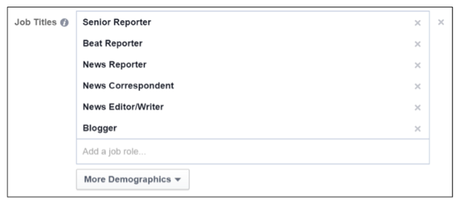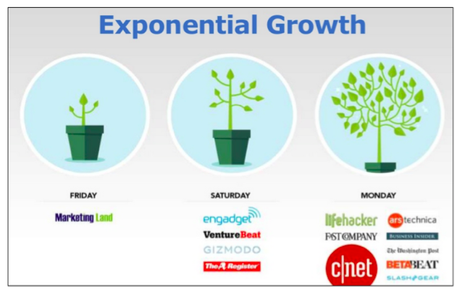 We’ve all been there: You create a carefully crafted piece of blog content on a hot industry topic, you publish it on your corporate (or personal) website…and…crickets. For some reason, it’s getting little to no traction. This is, of course, troubling, because this particular post should be a huge driver of traffic back to your blog. It’s big news, and you’ve done all the pre-publication leg work. You’ve researched and used the correct keywords. In fact, you’ve optimized your SEO to the max and you’ve shared it on your social networks and via an email newsletter.
We’ve all been there: You create a carefully crafted piece of blog content on a hot industry topic, you publish it on your corporate (or personal) website…and…crickets. For some reason, it’s getting little to no traction. This is, of course, troubling, because this particular post should be a huge driver of traffic back to your blog. It’s big news, and you’ve done all the pre-publication leg work. You’ve researched and used the correct keywords. In fact, you’ve optimized your SEO to the max and you’ve shared it on your social networks and via an email newsletter.
So, what do you do next? You put a little more elbow grease into this effort, and get ready to explore “pay per click” (PPC).
PPC allows you to market directly to the right people, in a highly targeted manner, and at minimal cost to you. Larry Kim, founder of WordStream, calls PPC “people-based” marketing. PPC is of course a long-established and effective method of supplementing SEO and organic search for businesses and brands large and small, but Kim has been tweaking the methodology a bit. What he has done is to use a PPC strategy to identify online influencers. Then he targets his blog content towards them on social. Writing at Search Engine Land, he outlined what he says have been some very interesting results. Let’s take a look, and see how you can adopt and adapt some of these practices to get you B2B content seen and shared.
Focused Targeting
Kim uses the example from an article that he published last year on the WordStream blog, concerning Google’s decision to drop mandatory Google+ integration for Gmail users. Having published and shared his highly topical blog post, Kim went on to create custom lists on Twitter and Facebook to target influencers who he thought would be interested in the content.
Twitter Ads was his first port of call where he was able to identify an audience of more than 1,600 influencers (as this graphic from his article illustrates).

Facebook allowed him to focus in even more, targeting specific job titles and interests.

The result of targeting in this way is to make sure that your valuable content will be put in front of the right eyeballs, whether CEOs, journalists, or potential clients and customers.
From Small Acorns do Mighty Oaks Grow
Kim’s target was industry journalists and writers at highly reputable publications.
And the results were pretty impressive by any standards. The story was picked up within hours by Marketing Land, citing Kim as the source (hello, increased online influence and credibility building!). Over the next few days, publication after publication shared, republished, and wrote about the story, as this graphic from Search Engine Land illustrates.

When done in the right way this approach can be likened to rolling up a snowball to build a snowman. Once one news outlet picks up the story (or, in the case of your particular industry vertical—one reputable online influencer or highly influential corporate blog), more sources that see the sponsored link run with it too. It’s classic FOMO, as the kids say: Fear of missing out.
Kim says that he got a mass of extra traffic—over 100K unique visitors following his campaign. While only a tiny fraction of those that will become paying customers, let’s face it, if you’re selling high priced business services, 10 or 20 new clients from one article quickly begins to add up. Also, at a minimum, his profile and credibility were substantially raised, and the company website benefitted from links to high authority sites, and they had a huge new audience for future campaigns; all at a cost, said Kim, of around fifty bucks.
PPC Marketing of Content Has Benefits
Larry Kim’s experiment definitely demonstrates potential benefits of using PPC to promote content. His success aside, many people balk when they hear “money” in an equation. PPC, however, won’t break the bank and can be tightly managed:
- You only pay when someone clicks on your ad.
- You can tightly control your PPC budget to limit costs.
- PPC results can appear more quickly, which is vital to getting a response to a hot news topic.
- You can target precisely to your intended audience, with the right message, in the right place, at the right time.
- Paid promotion can boost your content by stimulating more organic sharing.
Having the ability to customize your audience by demographic, occupation, interests, and even location is clearly a powerful tool for promotion. As ever in life, though, there are no “golden tickets,” and where there are benefits, there are also risks and pitfalls that you need to be aware of.
PPC for Content Also Carries Risks
The risk lies in promoting irrelevant, spammy, or just plain dull content. You won’t only lose out on however much money you spend on your PPC campaign, you will also lose valuable and difficult to build digital credibility with the very influencers that you are trying to reach. Content needs to be topical, interesting, and relevant—both to your business and to the target audience.
A word of warning though if you haven’t dabbled in PPC before. You do need to understand the rules and guidelines and the potential impact on your business before you start. You need to have a clear understanding of what you are trying to achieve and a strategy to reach that goal. You need to measure the results and tweak your methods to produce better outcomes next time. Get all that right and you have the opportunity to give your content a PPC boost.
Have you used a PPC campaign to amplify your content yet? I would love to hear about your experiences if you have.
Other resources on this topic:
Hitchhiker’s Guide to Ecommerce PPC (Infographic)
Marketers’ Focus for 2016: Digital Tactics that Help Acquire, Convert, Retain Customers [Report]
How This Entrepreneur Super Charged Web Traffic with PPC Campaigns
This post was originally published on The Marketing Scope.

